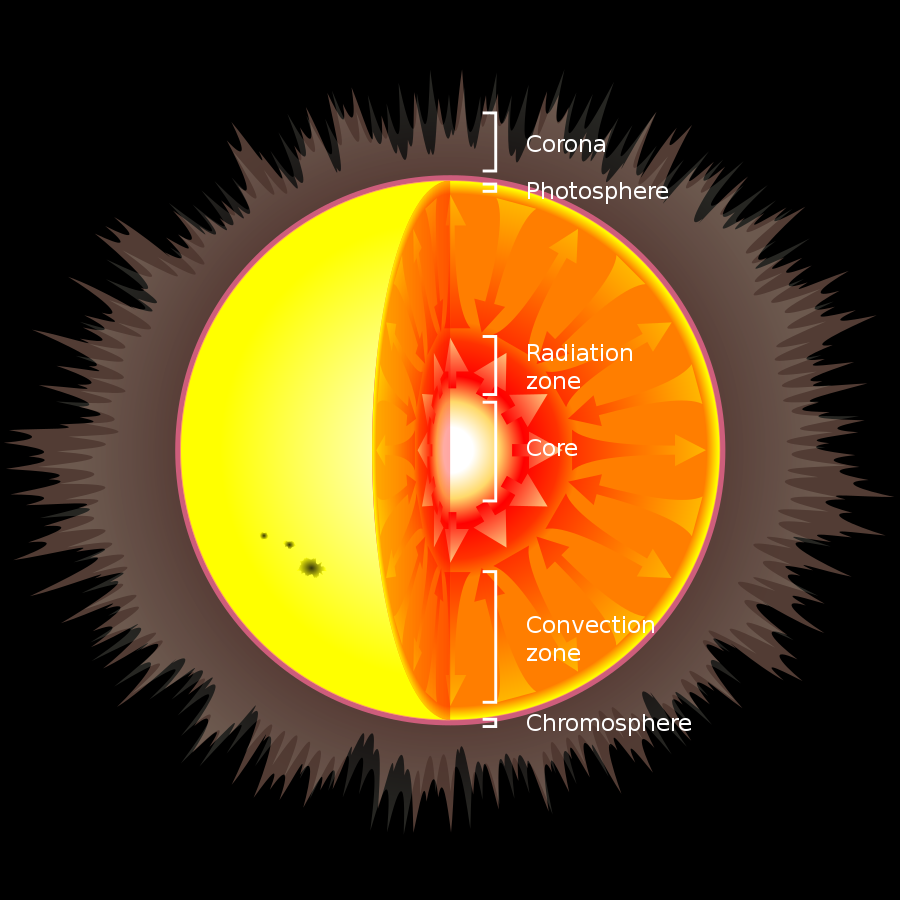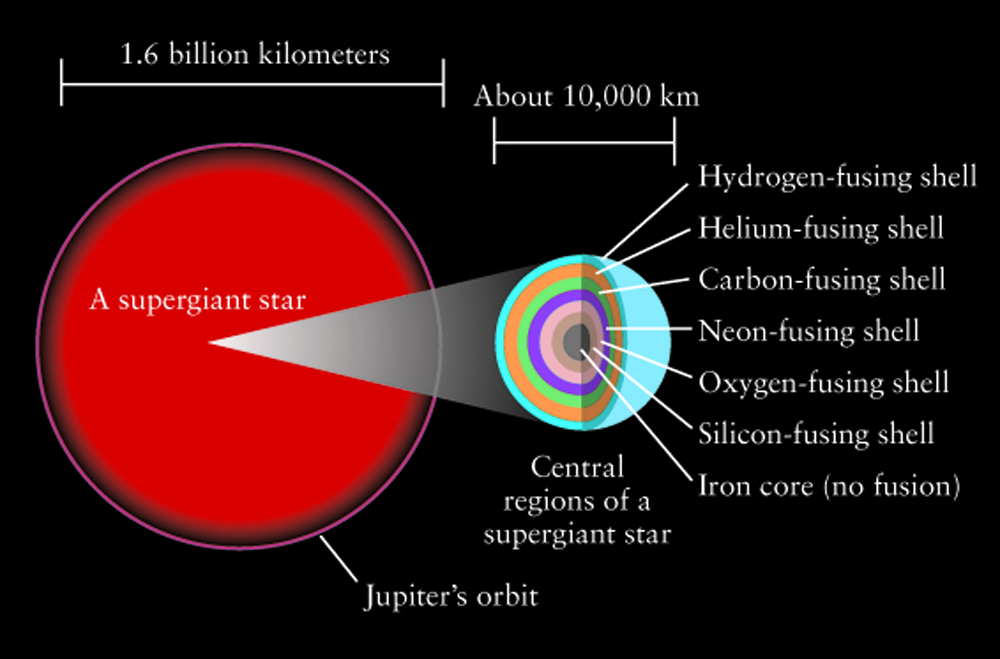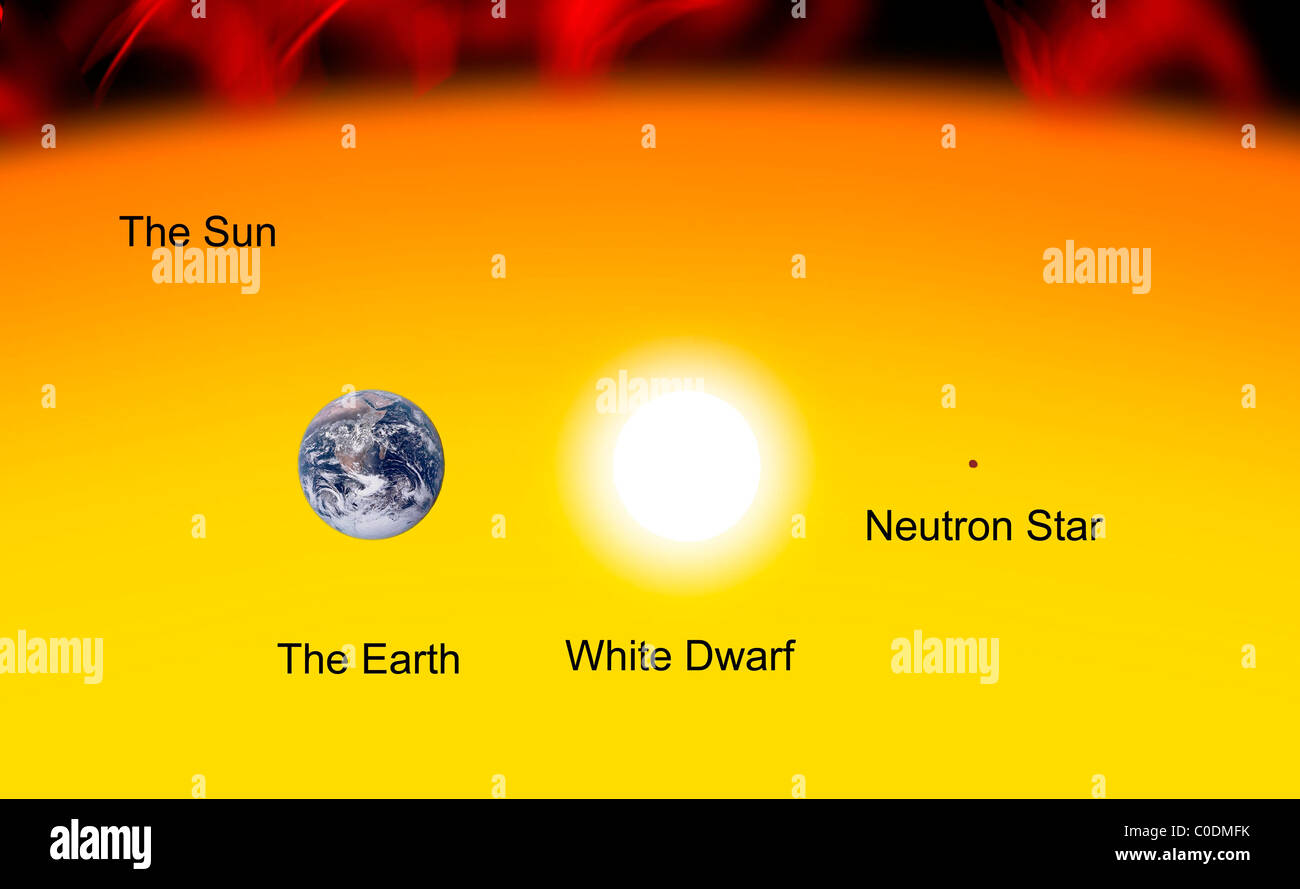Neutron stars, quote from yahoo today
- THX1138
- Emailed Bob; Got a new title!
- Posts: 305
- Joined: Sat Nov 19, 2005 9:27 am
- AKA: Wile-e-coyote super genius
- Location: San Luis Obispo
- Contact:
Neutron stars, quote from yahoo today
Neutron stars are so heavy that a small teaspoon of their material weighs four billion tonnes.
If this is true just exactly how much would that teaspoon of material have to weigh before it would become a black hole?
A billion tons sounds a bit excessive to me but then that's why I'm here asking.
Stories are just that and just one of the many great things about asking here is one can expect facts on the matter and people nice enough to explain to you (in depth) anything you might want to ask.
I wish I had more time to spend reading all the posts here but I just haven't lately but don't ever think that I don't love this website
If this is true just exactly how much would that teaspoon of material have to weigh before it would become a black hole?
A billion tons sounds a bit excessive to me but then that's why I'm here asking.
Stories are just that and just one of the many great things about asking here is one can expect facts on the matter and people nice enough to explain to you (in depth) anything you might want to ask.
I wish I had more time to spend reading all the posts here but I just haven't lately but don't ever think that I don't love this website
I've come to the conclusion that when i said i wanted to be somebody when i grew up i probably should have been more specific
- Chris Peterson
- Abominable Snowman
- Posts: 18594
- Joined: Wed Jan 31, 2007 11:13 pm
- Location: Guffey, Colorado, USA
- Contact:
Re: Neutron stars, quote from yahoo today
A black hole weighs less than the star it came from... and that star didn't become a black hole until it stopped fusing. That's because weight isn't what matters. Density matters. And a teaspoon of neutron star isn't dense enough to form a black hole.THX1138 wrote: ↑Thu Jul 21, 2022 9:02 pm Neutron stars are so heavy that a small teaspoon of their material weighs four billion tonnes.
If this is true just exactly how much would that teaspoon of material have to weigh before it would become a black hole?
A billion tons sounds a bit excessive to me but then that's why I'm here asking.
Stories are just that and just one of the many great things about asking here is one can expect facts on the matter and people nice enough to explain to you (in depth) anything you might want to ask.
I wish I had more time to spend reading all the posts here but I just haven't lately but don't ever think that I don't love this website
Chris
*****************************************
Chris L Peterson
Cloudbait Observatory
https://www.cloudbait.com
*****************************************
Chris L Peterson
Cloudbait Observatory
https://www.cloudbait.com
Re: Neutron stars, quote from yahoo today
THX1138 wrote: ↑Thu Jul 21, 2022 9:02 pm Neutron stars are so heavy that a small teaspoon of their material weighs four billion tonnes.
If this is true just exactly how much would that teaspoon of material have to weigh before it would become a black hole?
A billion tons sounds a bit excessive to me but then that's why I'm here asking.
Stories are just that and just one of the many great things about asking here is one can expect facts on the matter and people nice enough to explain to you (in depth) anything you might want to ask.
I wish I had more time to spend reading all the posts here but I just haven't lately but don't ever think that I don't love this website
Oh wow. Somehow I think that I, the math idiot, should try to answer that question. And I fear that I'm not even going to answer the specific question.
I guess we have to start by asking how you can make a neutron star or a black hole in the first place. We have to find a way to compress matter absolutely prodigiously in order to create such monsters.
But we can turn the question around, too. Why is it that matter just doesn't "collapse"? What is it that "holds it up" in the first place?
The math idiot is about to explain math. Beware.
This is what I think I sort of semi-sort-of-halfbaked-understand. Electrons require their own space.
Electrons are fermions, which is to say that they are half-integers or half-spin particles. That means that an electron must spin 720 degrees in order to return to its original state. An electron that spins 360 degrees turns itself "out of phase".
I feel I'm babbling, so please watch the video below to understand a little bit more. Please note that the title of the video is "How Electron Spin Makes Matter Possible"!
Click to play embedded YouTube video.
How Electron Spin Makes Matter Possible
Anyway, here's the deal. Because of their half-integer spin, two electrons can't occupy the same quantum space. You can't squeeze matter so much that the electrons that are such a vital part of all "ordinary" matter are pushed into another electron's quantum state.
Except you can. But it takes an enormous concentration of matter to make electrons share their own private space.
Our Sun is going to do it. Oh, wait, correction: The Sun won't be able to do it.
When the Sun has used up all the hydrogen in its core, it will no longer be able to produce energy by fusing hydrogen into helium to hold itself up against the force of gravity. So when the Sun's core has run out of hydrogen, the core will shrink and become much smaller and hotter. Eventually the core will become so small and hot that it can start fusing helium (which is the "ashes" of hydrogen fusion) into carbon and oxygen. This helium fusion will stop the relentless shrinking of the Sun's core.
Click to play embedded YouTube video.
For a while. But then the Sun's core will run out of helium, too. And the Sun is not massive enough to make its core hot enough to fuse carbon and oxygen into heavier elements. So there will be no more fusion going on in the Sun's core, and gravity will squeeze the core and make it shrink and shrink and shrink and shrink...
Until the electrons push back! No! We need our own space!
The Sun is not massive enough to overcome the power of the electrons pushing back against further compression. The electrons will stop the Sun from shrinking further. When the tiny, compact Sun is being held up by its own electrons, then the Sun has turned into a white dwarf.
Almost all stars are believed to end up as white dwarfs. That's because almost all stars are going to end up with non-fusing cores weighing less than 1.4 solar masses, which is the limit of the "heavy lifting" that electrons can do. Only very massive stars are believed to end up as neutron stars. That's because they will end up with cores weighing more than 1.4 solar masses. And only the most massive stars are believed to end up as black holes.
Consider a star like Rigel in Orion. According to Wikipedia, the mass of Rigel is some 20 solar masses. That is enough to make sure that Rigel will end its life in a supernova. But what will happen to its core?
The core of Rigel will shrink and shrink and go through various stages of fusion. Eventually, Rigel will end up with an iron core. An iron core is the end station for all stellar cores. No more energy can be extracted from the core by compressing it further.
So the iron core of Rigel will "collapse" catastrophically. But almost certainly the collapse will stop before the core turns into a black hole.
Because almost certainly the electrons will push back. Except they won't. The electrons will be "pushed into the protons" (or something like that) and the entire core will turn into a mass of neutrons. And the neutrons will push back, with a much greater force than the electrons. The way I understand it, it is the sudden creation of a neutron core that causes the enormous "energy flash" that leads to the supernova explosion in the first place.
You may want to watch the video below to understand a little more about how a supernova explodes. The video is in French, but there are English subtitles.
Click to play embedded YouTube video.
So Rigel will end up with a neutron core, and Rigel will become a neutron star. All the fluff that surrounded the core will be lost and scattered in space.
But sometimes, in some cases, the neutrons can't stop the collapse. If the mass of the core that turned into a neutron star is more than, say, four solar masses or so (I'm not sure how massive the core has to be), then the neutrons can't hold the tiny supermassive core up against the tremendous force of gravity. The core will collapse into a black hole.
What will the black hole weigh (or, more accurately, what will be the mass of the black hole)? Well, I guess the mass will be the same as the mass of the neutron star that collapsed into a black hole. So if the mass of the neutron star was four solar masses, the black hole that it collapsed into will also have a mass of four solar masses.
But while we can talk about a teaspoon of neutron star mass, we can't talk about a teaspoon of black hole mass. Because the neutron star does have a volume, thanks to the neutrons holding it up, but the black hole has no volume. There is no such thing as a teaspoon of black hole.
That's the best I can do for you!
Ann
Color Commentator
- Fred the Cat
- Theoretic Apothekitty
- Posts: 975
- Joined: Mon Feb 22, 2016 4:09 pm
- AKA: Ron
- Location: Eagle, Idaho
Re: Neutron stars, quote from yahoo today
Constraints of early matter formation are being investigated too. 
Freddy's Felicity "Only ascertain as a cat box survivor"
Re: Neutron stars, quote from yahoo today
I found an interesting article about black holes and their minimum mass, compared with neutron stars.
So, to conclude:
The most light-weight stellar-mass black holes in binary systems have had a mass of 5 solar masses, and neutron stars can theoretically be as massive as 2.3 solar masses. But that lone wandering rogue stellar-mass black hole just might have a mass between 1.6 and 4.4 solar masses. On the other hand, it might also be as massive as 7.1 solar masses.
Ann
Keith Cooper at Space.com wrote:
A rogue black hole wandering the space lanes of our Milky Way galaxy alone could be the smallest black hole yet found, according to one estimate of its mass...
The black hole is 5,000 light-years away and was discovered thanks to the power of its gravity to act as a gravitational lens, magnifying the light of a background star 19,000 light-years away...
Sahu's team used the Hubble Space Telescope to follow up on the discovery, and the degree of gravitational lensing allowed them to conclude that the black hole has a mass about 7.1 times greater than the sun's mass.
However, a second team has now come forward with a different mass calculation. The group, led by Casey Lam of the University of California, Berkeley, concluded that the object has a mass between 1.6 and 4.4 times the mass of the sun. If correct, then this could have intriguing implications.
Stellar-mass black holes are the product of the supernovae of stars with masses 20 times greater than the Sun. On the other hand, when stars with between 8 and 20 solar masses go supernovae, they leave behind a neutron star instead.
Neutron stars can theoretically have masses up to about 2.3 solar masses. Observations of stellar-mass black holes detectable in binary systems have not turned up any with less than 5 solar masses, creating a gap between the most massive neutron stars and the least massive black holes.
So, to conclude:
The most light-weight stellar-mass black holes in binary systems have had a mass of 5 solar masses, and neutron stars can theoretically be as massive as 2.3 solar masses. But that lone wandering rogue stellar-mass black hole just might have a mass between 1.6 and 4.4 solar masses. On the other hand, it might also be as massive as 7.1 solar masses.
Ann
Color Commentator
Re: Neutron stars, quote from yahoo today
So what would a teaspoon of black hole weigh?
Well, since it is impossible even in theory to chop pieces off of a black hole, and since the size of the black hole (or at least the size of the singularity in the center) is, for all intents and purposes, zero, you could fit the entire black hole in a teaspoon. So if you had a really small stellar-mass black hole weighing only 5 solar masses, a teaspoon of this black hole would indeed weigh 5 solar masses.
Of course the black hole would eat the teaspoon and a lot of other stuff around it, but that's another question!
Ann
Well, since it is impossible even in theory to chop pieces off of a black hole, and since the size of the black hole (or at least the size of the singularity in the center) is, for all intents and purposes, zero, you could fit the entire black hole in a teaspoon. So if you had a really small stellar-mass black hole weighing only 5 solar masses, a teaspoon of this black hole would indeed weigh 5 solar masses.
Of course the black hole would eat the teaspoon and a lot of other stuff around it, but that's another question!
Ann
Color Commentator
- THX1138
- Emailed Bob; Got a new title!
- Posts: 305
- Joined: Sat Nov 19, 2005 9:27 am
- AKA: Wile-e-coyote super genius
- Location: San Luis Obispo
- Contact:
Re: Neutron stars, quote from yahoo today
Thanks for your reply Chris, I was then going to ask like ok how about a trillion billion tons in an area the size of a teaspoon. Would that become a black hole?
Before going ahead and asking that question I figured that this might be a good time to learn from my past mistakes and actually finish reading the thread lest I look like a dummy for the 183-67-945th time.
And so Now this takes me to Ann (no I haven't forgotten about you Fred the cat) Ann, Ann, Ann I don't really know what exactly to say to thank you for all that but I'm going to try to find the right words. You are really something girl to take the time to post those links and to take the time to try to explain the matter to me as you have, its like, well just WOW and thank you so very, very much
Fred The Cat, it's likely just me but I don't see the link between dark matter and the topic of this thread but nonetheless I did read through that link you sent me and I do thank you for sending it. One more thing Fred The cat, Have you ever seen the skit on YouTube by, well his name is Zolton and the skit is called (Why cats are better than dogs) Its about six minutes long give it a look see its pretty funny.
Then lastly, LUV you Ann.
Before going ahead and asking that question I figured that this might be a good time to learn from my past mistakes and actually finish reading the thread lest I look like a dummy for the 183-67-945th time.
And so Now this takes me to Ann (no I haven't forgotten about you Fred the cat) Ann, Ann, Ann I don't really know what exactly to say to thank you for all that but I'm going to try to find the right words. You are really something girl to take the time to post those links and to take the time to try to explain the matter to me as you have, its like, well just WOW and thank you so very, very much
Fred The Cat, it's likely just me but I don't see the link between dark matter and the topic of this thread but nonetheless I did read through that link you sent me and I do thank you for sending it. One more thing Fred The cat, Have you ever seen the skit on YouTube by, well his name is Zolton and the skit is called (Why cats are better than dogs) Its about six minutes long give it a look see its pretty funny.
Then lastly, LUV you Ann.
I've come to the conclusion that when i said i wanted to be somebody when i grew up i probably should have been more specific
- Chris Peterson
- Abominable Snowman
- Posts: 18594
- Joined: Wed Jan 31, 2007 11:13 pm
- Location: Guffey, Colorado, USA
- Contact:
Re: Neutron stars, quote from yahoo today
You're getting in the right ballpark. The key math is the equation for the Schwarzschild radius, which is the radius at which a body will become a black hole for a given mass. It is given as:
r = 2GM/c2 where G is the gravitational constant 6.67x10-11.
So for a billion tonnes (1012 kg) you'd have to squeeze your teaspoon of material down to a radius of about 10-15 m to make it into a black hole. We can rearrange the equation for mass:
M = rc2/2G
and take a teaspoon radius of 1 cm (10-2 m) and we see that a mass greater than 7x1021 tonnes will become a black hole. Which is seven trillion billion tonnes.
Chris
*****************************************
Chris L Peterson
Cloudbait Observatory
https://www.cloudbait.com
*****************************************
Chris L Peterson
Cloudbait Observatory
https://www.cloudbait.com
- THX1138
- Emailed Bob; Got a new title!
- Posts: 305
- Joined: Sat Nov 19, 2005 9:27 am
- AKA: Wile-e-coyote super genius
- Location: San Luis Obispo
- Contact:
Re: Neutron stars, quote from yahoo today
Man, that is just fricking hard to comprehend. Seven trillion billion tonnes in an area that small.
OK I can almost get my head around all the event's that took place for any given neutron star to be made however why it would stay that dense after all is said and done is another story all together. One would think that just free floating in space it would expand. Once squeezed that small it just stays that way? Guess so.
OK I can almost get my head around all the event's that took place for any given neutron star to be made however why it would stay that dense after all is said and done is another story all together. One would think that just free floating in space it would expand. Once squeezed that small it just stays that way? Guess so.
I've come to the conclusion that when i said i wanted to be somebody when i grew up i probably should have been more specific
- Chris Peterson
- Abominable Snowman
- Posts: 18594
- Joined: Wed Jan 31, 2007 11:13 pm
- Location: Guffey, Colorado, USA
- Contact:
Re: Neutron stars, quote from yahoo today
There are two issues. Very dense objects "stay squeezed" because at some point the attractive force of gravity becomes greater than the various repulsive nuclear and electromagnetic forces (as Ann went into in some detail). But with respect to black holes, we don't even know what "stay squeezed" means, as a black hole is either a singularity or a sort of fundamental particle. In either case, it isn't squeezed material anymore, but something entirely different.THX1138 wrote: ↑Sun Jul 24, 2022 6:22 pm Man, that is just fricking hard to comprehend. Seven trillion billion tonnes in an area that small.
OK I can almost get my head around all the event's that took place for any given neutron star to be made however why it would stay that dense after all is said and done is another story all together. One would think that just free floating in space it would expand. Once squeezed that small it just stays that way? Guess so.
Chris
*****************************************
Chris L Peterson
Cloudbait Observatory
https://www.cloudbait.com
*****************************************
Chris L Peterson
Cloudbait Observatory
https://www.cloudbait.com
Re: Neutron stars, quote from yahoo today
Thank you so much for your praise, THX1138, I'm very glad you appreciated my replies to you!THX1138 wrote: ↑Sun Jul 24, 2022 4:59 am Thanks for your reply Chris, I was then going to ask like ok how about a trillion billion tons in an area the size of a teaspoon. Would that become a black hole?
Before going ahead and asking that question I figured that this might be a good time to learn from my past mistakes and actually finish reading the thread lest I look like a dummy for the 183-67-945th time.
And so Now this takes me to Ann (no I haven't forgotten about you Fred the cat) Ann, Ann, Ann I don't really know what exactly to say to thank you for all that but I'm going to try to find the right words. You are really something girl to take the time to post those links and to take the time to try to explain the matter to me as you have, its like, well just WOW and thank you so very, very much
Fred The Cat, it's likely just me but I don't see the link between dark matter and the topic of this thread but nonetheless I did read through that link you sent me and I do thank you for sending it. One more thing Fred The cat, Have you ever seen the skit on YouTube by, well his name is Zolton and the skit is called (Why cats are better than dogs) Its about six minutes long give it a look see its pretty funny.
Then lastly, LUV you Ann.
Ann
Color Commentator




